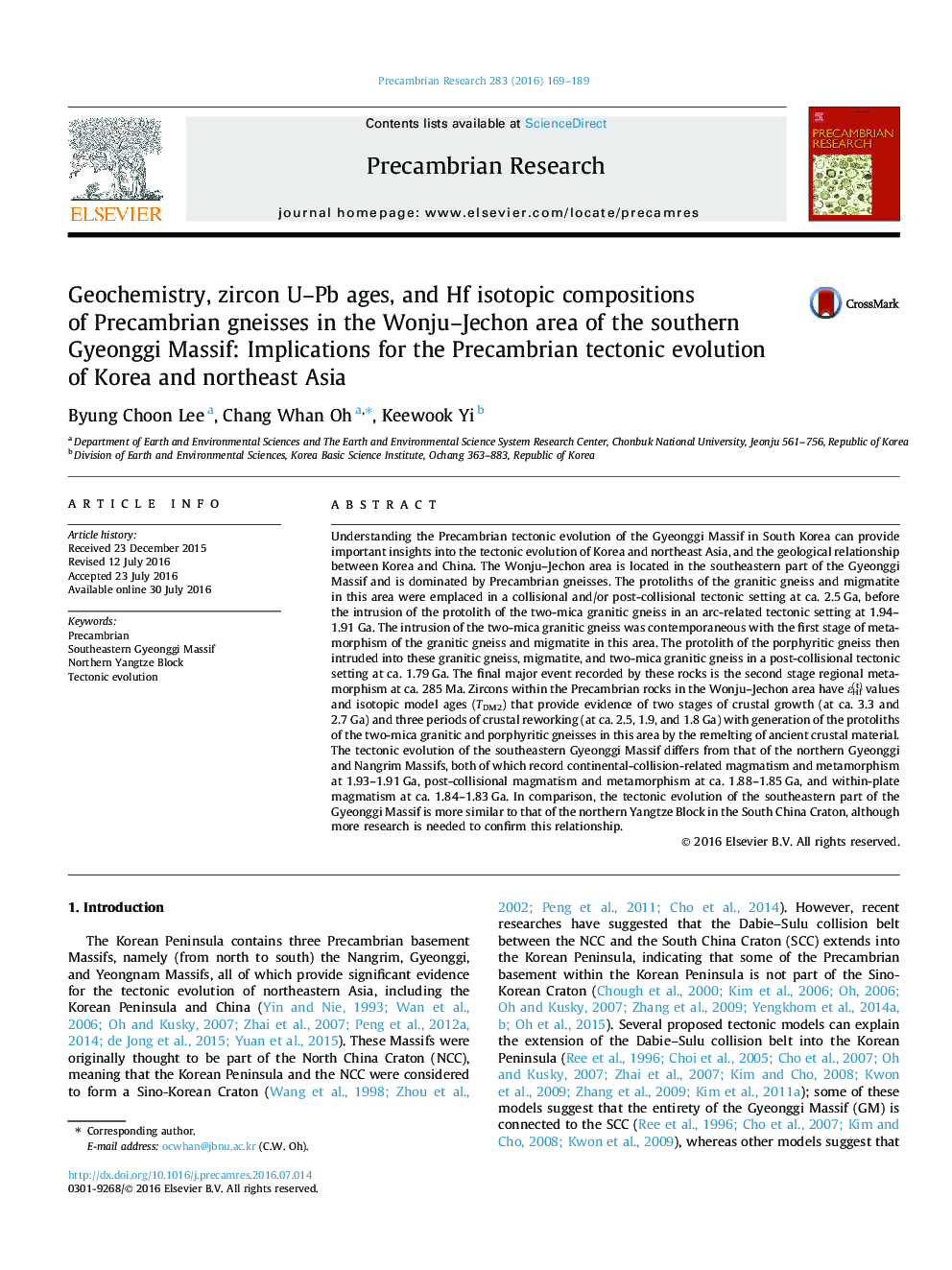| کد مقاله | کد نشریه | سال انتشار | مقاله انگلیسی | نسخه تمام متن |
|---|---|---|---|---|
| 4722329 | 1639592 | 2016 | 21 صفحه PDF | دانلود رایگان |

• Study area underwent various magmatic events during the 2.50–1.79 Ga.
• Crustal growth (3.3, 2.7 Ga) and reworking events (2.5, 1.9, 1.8 Ga) are confirmed.
• Study area underwent different tectonic evolution compared to northern GM and JLJB.
• Study area underwent similar tectonic evolution compared northern YB in the SCC.
Understanding the Precambrian tectonic evolution of the Gyeonggi Massif in South Korea can provide important insights into the tectonic evolution of Korea and northeast Asia, and the geological relationship between Korea and China. The Wonju–Jechon area is located in the southeastern part of the Gyeonggi Massif and is dominated by Precambrian gneisses. The protoliths of the granitic gneiss and migmatite in this area were emplaced in a collisional and/or post-collisional tectonic setting at ca. 2.5 Ga, before the intrusion of the protolith of the two-mica granitic gneiss in an arc-related tectonic setting at 1.94–1.91 Ga. The intrusion of the two-mica granitic gneiss was contemporaneous with the first stage of metamorphism of the granitic gneiss and migmatite in this area. The protolith of the porphyritic gneiss then intruded into these granitic gneiss, migmatite, and two-mica granitic gneiss in a post-collisional tectonic setting at ca. 1.79 Ga. The final major event recorded by these rocks is the second stage regional metamorphism at ca. 285 Ma. Zircons within the Precambrian rocks in the Wonju–Jechon area have εHf(t) values and isotopic model ages (TDM2) that provide evidence of two stages of crustal growth (at ca. 3.3 and 2.7 Ga) and three periods of crustal reworking (at ca. 2.5, 1.9, and 1.8 Ga) with generation of the protoliths of the two-mica granitic and porphyritic gneisses in this area by the remelting of ancient crustal material. The tectonic evolution of the southeastern Gyeonggi Massif differs from that of the northern Gyeonggi and Nangrim Massifs, both of which record continental-collision-related magmatism and metamorphism at 1.93–1.91 Ga, post-collisional magmatism and metamorphism at ca. 1.88–1.85 Ga, and within-plate magmatism at ca. 1.84–1.83 Ga. In comparison, the tectonic evolution of the southeastern part of the Gyeonggi Massif is more similar to that of the northern Yangtze Block in the South China Craton, although more research is needed to confirm this relationship.
Journal: Precambrian Research - Volume 283, September 2016, Pages 169–189